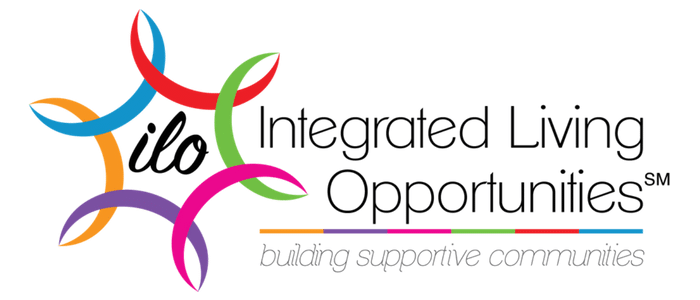Integrated Living Opportunities (ILO) is an organization dedicated to helping people with disabilities build inclusive and supported communities in which they can live independently. ILO does this by providing families with the tools and resources needed to create communities, as well as developing teams of paid and unpaid individuals for our self-advocates as they move into their own homes.
On March 22, Center for Medicare and Medicaid Services (CMS) released some new guidance that will open up even more independent living possibilities for adults with disabilities. Among other things, it removes language that has impeded an individual with disability’s ability to choose the type of setting in which he or she would like to live. This new guidance is an important victory for individuals with disabilities and advocates from across the country. It has long been argued that the previous guidance was discriminatory, and advocates have worked hard to regain the individual’s ability to choose their preferred residential setting.
What does this new guidance mean?
If you are unfamiliar with this issue, here is a brief summary: The CMS Guidance affects the types of residential settings that individuals with disabilities can live in and still receive their Home and Community Based Services (HCBS) waiver. These waivers provide opportunities for Medicaid beneficiaries to receive services in their own home or community rather than institutions or other isolated settings.
Based on the previous CMS guidance, states were permitted to “refuse to fund any residential setting for people with disabilities that is larger than three or four people.[i]” In an attempt to desegregate and end the isolation of adults with disabilities, the guidance also restricted the individual’s ability to choose. While these regulations did help to defund historically segregating environments, such as institutions and residential schools, it also limited the ability of individuals with disabilities to choose to live in environments such as farmsteads, gated communities, and housing clusters. As written in Psychology Today,
“This [desegregation] is a crucial and uncontroversial goal. But where it got sticky was in the definition of these terms. Is 20 people with Autism living together “segregation” or “community”? And who decides? Largely due to the influence of a vocal minority of inclusion advocates, “institution” has been redefined as “more than four unrelated people.” In practice, this has come to mean evaluating policies solely in terms of how many neurotypical people any individual with I/DD lives and works with – whether or not that “inclusive” setting is desired or even appropriate.”
This new guidance has changed that. To begin, it affirms CMS’s commitment to person-centered planning, or, as defined by the PACER Institute, “an ongoing problem-solving process used to help people with disabilities plan for their future. In person centered planning, groups of people focus on an individual and that person’s vision of what they would like to do in the future.” It also focuses on the outcomes as defined by the person in their plan, rather than the characteristics of the physical setting. It removes the language that specifically restricts individuals with disabilities from living in gated communities, farmsteads, and other similar settings while receiving HDBS waivers.
All in all, this is a positive step forward for individuals with disabilities that are looking for independent living options. There are many more changes that this new guidance brings about – including changes to the heightened scrutiny process – so if you are interested in learning more, follow this link to read the guidance in full.
It is important to note that states are still free to choose to adopt more restrictive criteria in regards to waivers and residential settings. Should that happen in your state, remember: the release of this new guidance is the result of tireless advocacy of disability organizations from across the country. Pay attention to what is happening in your state – contact policy makers, advocate, educate.
If you would like more information about HCBS waivers, independent living for individuals with disabilities, or would like to discuss independent living options for your family member with disabilities, please contact us! We would love to introduce you to our ILO network, and share with you the work we do to create communities for adults with disabilities.
https://www.psychologytoday.com/us/blog/inspectrum/201903/new-cms-guidance-expands-options-adults-idd?mc_cid=d5029a0e2a&mc_eid=1607c7ca29
